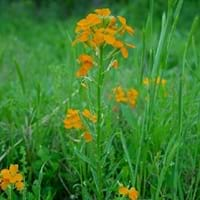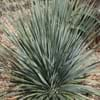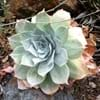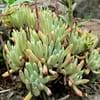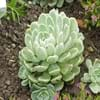Life Span
Perennial
Annual and Perennial
Type
Cactus or Succulent
Tender Perennial
Origin
Southwestern United States, Mexico
Southern Europe, Mediterranean
Types
Dasylirion acrotrichum, Dasylirion berlandieri, Dasylirion cedrosanum
Not Available
Habitat
Desert, Dry areas, Rocky areas
gardens, Grassland, Prairies
USDA Hardiness Zone
12-15
7-9
Sunset Zone
10, 11, 12, 13, 14, 15, 16, 17, 18, 19, 20, 21, 22, 23, 24
4, 5, 6, 14, 15, 16, 17, 18, 19, 20, 21, 22, 23, 24
Habit
Rosette/Stemless
Mat-forming
Flower Color
Yellow
Light Yellow
Flower Color Modifier
Not Available
Bicolor
Leaf Color in Spring
Green, Blue Green
Gray Green
Leaf Color in Summer
Green, Blue Green
Gray Green
Leaf Color in Fall
Green, Blue Green
Gray Green
Leaf Color in Winter
Green, Blue Green
Light Green
Plant Season
Spring, Summer, Fall, Winter
Spring, Summer, Fall, Winter
Sunlight
Full Sun
Full Sun, Partial Sun
Type of Soil
Loam, Sand
Loam, Sand
The pH of Soil
Neutral, Alkaline
Neutral, Alkaline
Soil Drainage
Well drained
Well drained
Bloom Time
Spring
Spring, Late Spring, Early Summer, Summer, Late Summer, Early Fall
Tolerances
Drought
Drought
Where to Plant?
Container, Ground
Container, Ground, Pot
How to Plant?
Leaf Cutting, Seedlings, Stem Cutting
Seedlings, Stem Cutting
Plant Maintenance
Medium
Medium
Watering Requirements
Does not require lot of watering, Water occasionally
Allow soil to be completely dry in between waterings, Water Deeply, Water less during winter
In Summer
Lots of watering
Lots of watering
In Spring
Moderate
Moderate
In Winter
Average Water
Average Water
Soil pH
Neutral, Alkaline
Neutral, Alkaline
Soil Type
Loam, Sand
Loam, Sand
Soil Drainage Capacity
Well drained
Well drained
Sun Exposure
Full Sun
Full Sun, Partial Sun
Pruning
Remove damaged leaves, Remove dead branches, Remove dead leaves, Remove dead or diseased plant parts
Cut or pinch the stems, Do not prune during shooting season, Prune if you want to improve plant shape, Prune prior to new growth, Remove deadheads
Fertilizers
All-Purpose Liquid Fertilizer, Fertilzer with low nitrogen content
All-Purpose Liquid Fertilizer
Pests and Diseases
Red blotch
fungus, Insects, Red blotch
Plant Tolerance
Drought
Drought
Flower Petal Number
Single
Single
Fragrant Bark/Stem
Not Available
No
Foliage Texture
Bold
Fine
Foliage Sheen
Matte
Matte
Attracts
Bees, Butterflies, Not Available
Bees, Birds, Butterflies
Allergy
Not Available
Skin irritation
Aesthetic Uses
Ground Cover
Beautification, Showy Purposes
Beauty Benefits
Not Available
Not Available
Environmental Uses
Air purification
Air purification
Medicinal Uses
Not Available
No Medicinal Use
Part of Plant Used
Not Available
Whole plant
Other Uses
useful as a ground cover
Showy Purposes
Used As Indoor Plant
No
No
Used As Outdoor Plant
Yes
Yes
Garden Design
Container, Dried Flower, Everlasting, Feature Plant, Rock Garden, Wall, Wildflower
Alpine, Container, Edging, Foundation, Groundcover, Mixed Border, Rock Garden / Wall
Botanical Name
DASYLIRION berlandieri
Erysimum capitatum
Common Name
Blue Giant, Blue Twister, Desert Spoon, Zaragosa
Sanddune Wallflower, Western Wallflower, Prairie Rocket
In Hindi
Blue Giant Grass
रेत टिब्बा Wallflower
In German
Blue Giant Grass
Sanddüne Wallflower
In French
Blue Giant Herbe
Sable Dune Wallflower
In Spanish
Blue Grass gigante
Duna de arena Wallflower
In Greek
Μπλε Giant Grass
Sand Dune Wallflower
In Portuguese
Blue Grass gigante
Duna Wallflower
In Polish
Błękitny Gigant Trawa
Wydma Wallflower
In Latin
Giant herba blue
Sand Dune Wallflower
Phylum
Tracheophyta
Magnoliophyta
Class
Not Available
Magnoliopsida
Order
Asparagales
Brassicales
Family
Agavaceae
Brassicaceae
Genus
Dasylirion
Erysimum
Clade
Angiosperms, Monocots
Angiosperms, Eudicots, Rosids
Tribe
Not Available
Not Available
Subfamily
Nolinoideae
Not Available
Number of Species
Not Available
Season and Care of Blue Giant and Sanddune Wallflower
Season and care of Blue Giant and Sanddune Wallflower is important to know. While considering everything about Blue Giant and Sanddune Wallflower Care, growing season is an essential factor. Blue Giant season is Spring, Summer, Fall and Winter and Sanddune Wallflower season is Spring, Summer, Fall and Winter. The type of soil for Blue Giant is Loam, Sand and for Sanddune Wallflower is Loam, Sand while the PH of soil for Blue Giant is Neutral, Alkaline and for Sanddune Wallflower is Neutral, Alkaline.
Blue Giant and Sanddune Wallflower Physical Information
Blue Giant and Sanddune Wallflower physical information is very important for comparison. Blue Giant height is 17.78 cm and width 10.16 cm whereas Sanddune Wallflower height is 30.50 cm and width 30.50 cm. The color specification of Blue Giant and Sanddune Wallflower are as follows:
Blue Giant flower color: Yellow
Blue Giant leaf color: Green and Blue Green
Sanddune Wallflower flower color: Light Yellow
- Sanddune Wallflower leaf color: Gray Green
Care of Blue Giant and Sanddune Wallflower
Care of Blue Giant and Sanddune Wallflower include pruning, fertilizers, watering etc. Blue Giant pruning is done Remove damaged leaves, Remove dead branches, Remove dead leaves and Remove dead or diseased plant parts and Sanddune Wallflower pruning is done Cut or pinch the stems, Do not prune during shooting season, Prune if you want to improve plant shape, Prune prior to new growth and Remove deadheads. In summer Blue Giant needs Lots of watering and in winter, it needs Average Water. Whereas, in summer Sanddune Wallflower needs Lots of watering and in winter, it needs Average Water.

